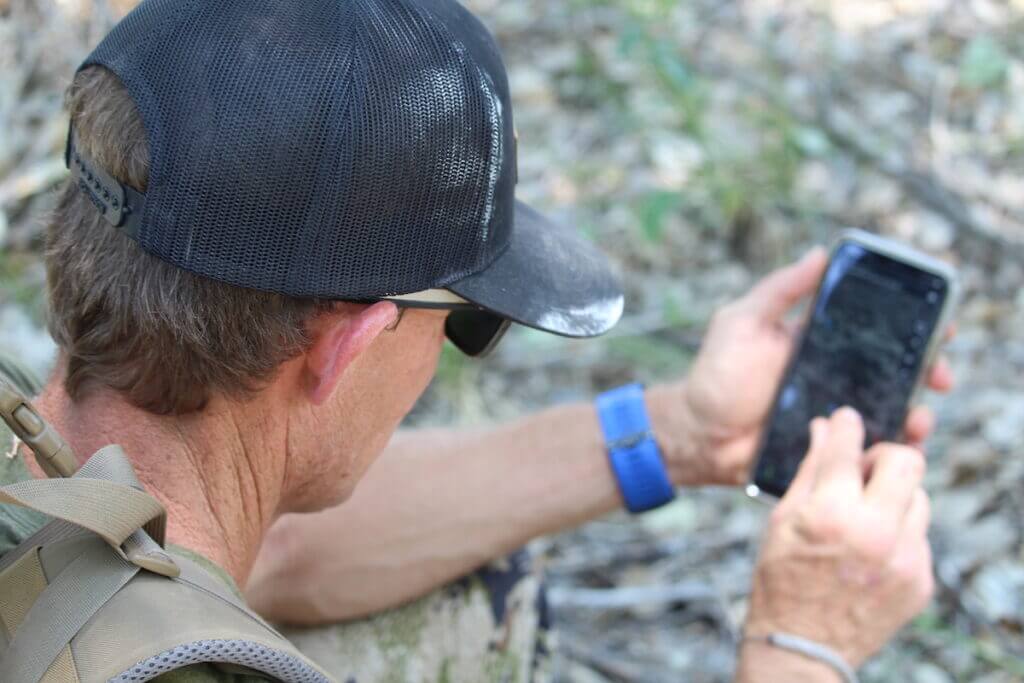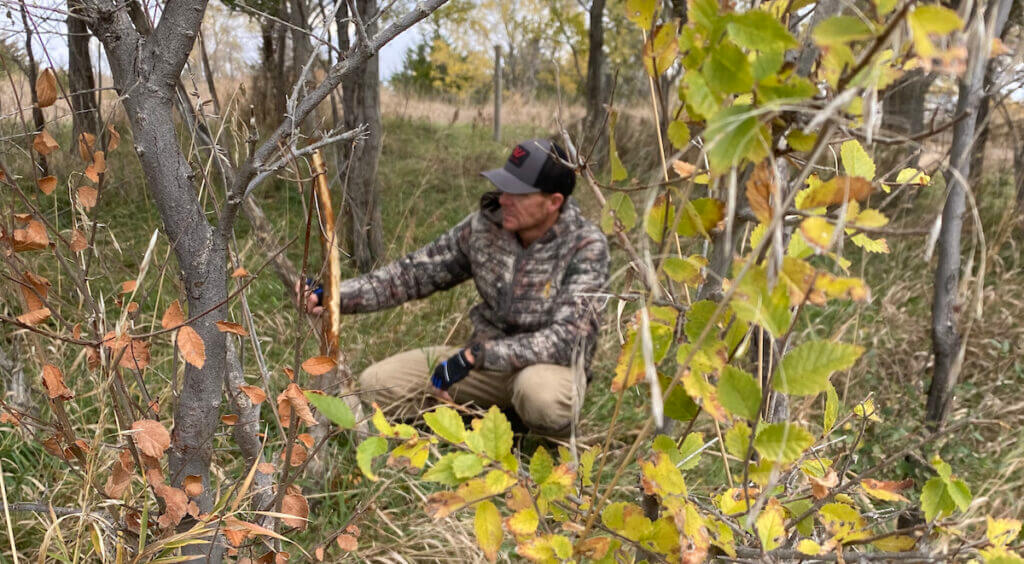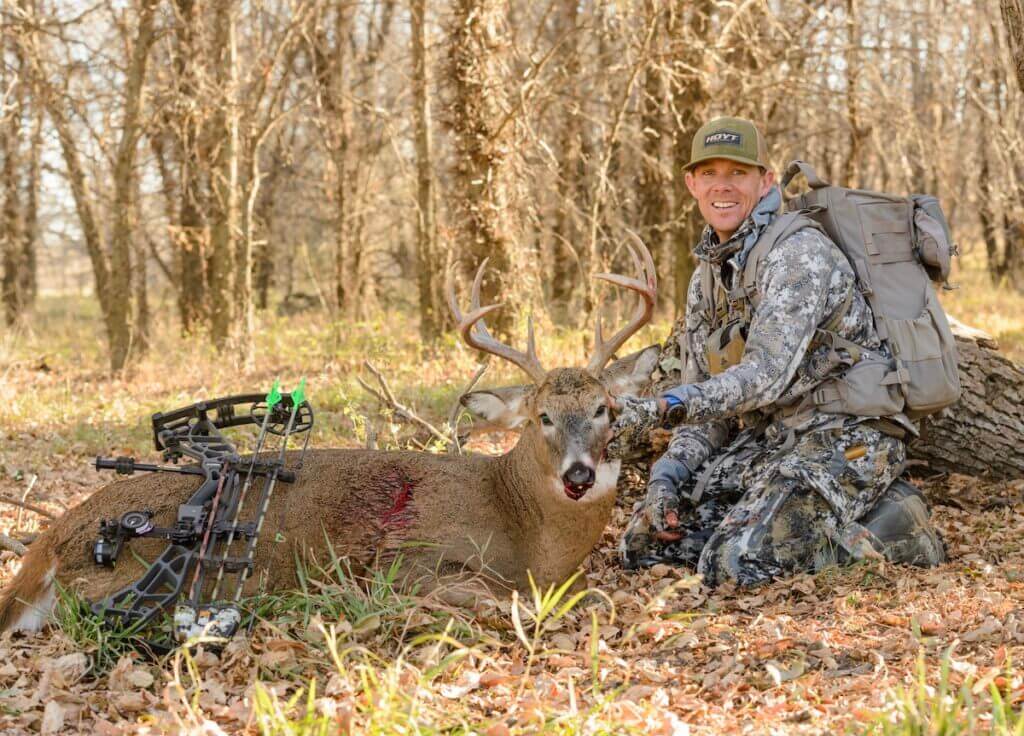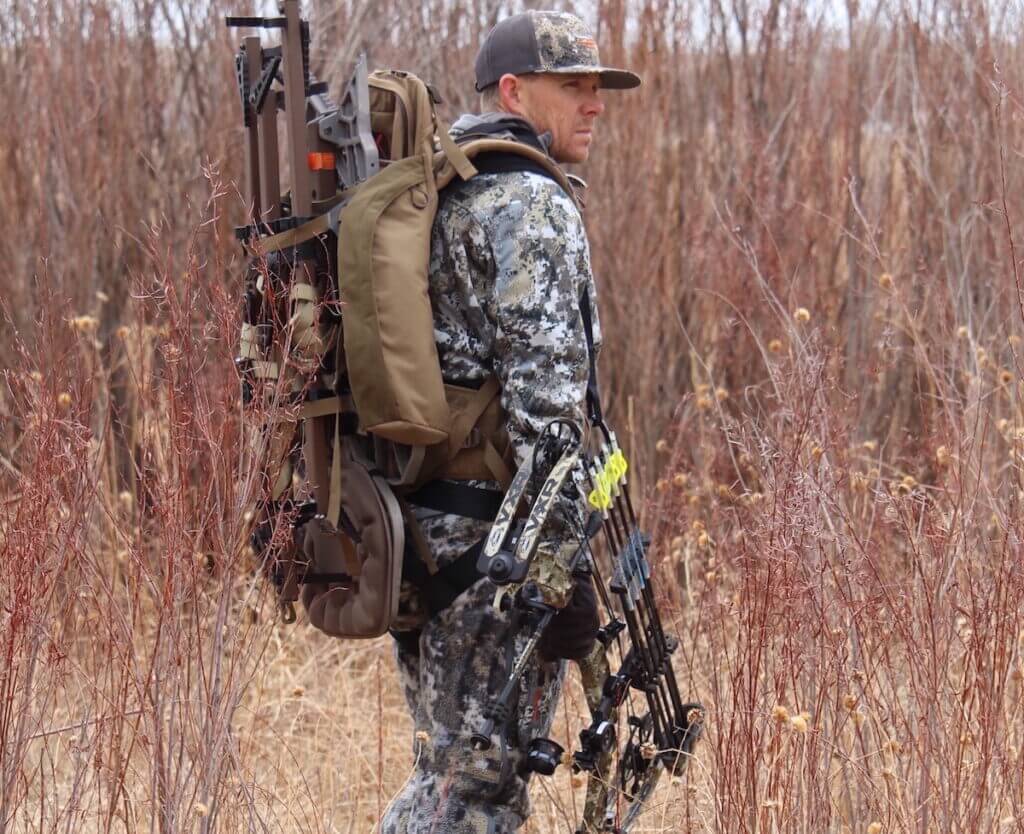Estimated reading time: 13 minutes
It’s November, it’s now the time of buck rut, and those bowhunting are staying on public land tracts carefully in hopes of encountering a big whitetail. If you’re one of those bowhunters, put the to-come advice to practice, and chances are good, you’ll come out of the deer woods heavier than you went in.
My first bowhunting rut hunt for public land whitetails was a flop. The area was fantastic, and there were plenty of brutes to chase. I was the problem. As a western hunter, I hadn’t pursued many whitetails in open-to-anyone dirt. I had a single treestand and one set of climbing sticks, and that was it.
I figured Pope & Young bucks would move briskly down most any trail since it was November. Wrong! In five days of hunting, from the same treestand, I saw four bucks — two year-and-a-half-olds and a pair of two-year-olds.
The good news is that I didn’t give up. I continued learning until I perfected my public land whitetail rut game. Today, I feel confident I can go anywhere in the country and match wits with rutting whitetails in any terrain.
You can, too. Maybe you are days away from your first-ever public land November rut hunt. Or, possibly, you’ve hunted whitetails on public land several times but are about to try a new area in a new state for the first time. Of course, you may be a sage public land whitetail warrior. Even still, I’m confident at least one section of the to-come public-land whitetail rut tips will help you succeed this November.
Let’s dive in!
Observe & Move
Digital Scouting for Your Public Land Hunt
I’m all about digital scouting. I’ve used my HuntStand app multiple times over the years to pick the exact tree, bush, etc., that I figured was a banger whitetail spot. I’ve been right a few times—however, the rut ushers in pure chaos.

Make Observations
If I haven’t been able to do some hands-on recon before my public land deer hunt, I locate trees, terrain features, etc., that will allow me to observe and move to the movement. This isn’t wasted time. I pick locations where I still may kill a deer or be able to call one bowhunting close, but the primary objective is to see how deer are using the terrain.
Bowhunting Public Land Small Parcels
For example, while hunting central Nebraska a few years back, I found myself on a small public land parcel. A quick bonus public land tip for you: Don’t overlook those lesser-sized 20 to 60-acre tracts of land. Most public land whitetail goers are drawn to larger parcels. I’ve killed many public land bucks on smaller tracts. Smaller tracts are easier to figure out during the shortened timeframe you have to hunt. Plus, because they don’t receive as much pressure, you can find good bucks and solitude.

My evening perch was a lone hardwood overlooking a gnarly bend in a creek, a weeded ditch row between two smaller blocks of timber, and a private land ag field adjacent to the Walk-In Access block. The weeded ditch row, which would’ve been my first choice, was a bust. I didn’t see a deer use the ditch to play Connect the Dots. I did watch a lone three-year-old blaze a tree and make a scrape on the creek bottom. The hottest activity was a lone trail leading from a timber block to the private land ag field. Nine does and three bucks—one shooter—wandered off the public to the private land groceries.
Hanging the Stand for Public Land Bowhunting
While the deer were feeding that night, I slipped in and hung a stand. Another hint for you: I didn’t hang that stand right on the public and private edge. I used the green light on my Browning Blackout Elite headlamp to locate the trail the deer were using. Then, I followed the trail deeper into the timber. The deeper I went, the more scrapes, rubs, and buck signs I discovered.
Using the hourly weather/wind predictor on my HuntStand app, I hung my Muddy The Outfitter lock-on stand in a hedge tree on the south side of the primary trail right on the edge of what appeared to be prime bedding. Six bucks walked past my tree stand the following day, and I harvested a respectable Nebraska 8-point. Observe and move to the movement.

Go Deeper!
Public land bowhunting is popular, especially for North America’s favorite big-game animal. Factor in the rut, and this is one of the most difficult times of the year to get away from people and find unpressured deer to hunt.
If you arrive at your public land hunting area and find the entire parking area and campground full, don’t panic. Most hunters will focus on the perimeter buck sign. By this, I mean the first rub or scrape they find when they toss a stand or blind on their back and look for a place to harvest a buck.

Don’t Stay at the Perimeter – Hunt the Deep Area
Your job is to blow past the perimeter sign and penetrate deep into the area where pressured deer have moved and are rutting. To do this takes some guts and willingness to wander. Chances are good you’ll make a few creek crossings, work your way through entanglements of seemingly impenetrable brush, and walk a few miles. The good news, if you don’t slow down until you start finding heavy rubs, large scrapes, and trails beaten down with tracks, is you’ll likely climb up a tree and have an amazing sit while others wait on deer that will show up long after the western sky swallows the sun.

This is an aggressive style of hunting, but you can get aggressive during the rut. Chances are good. You’ll bump into a few deer deeper into the good habitat. Don’t fret. Press in close to primary bedding, and good things will happen.
Bowhunting Public Land: Entrance & Exit
Often, you’ll find the hotspot but will need a few sits to make it happen. Now is the time to ensure your entrance and exit to and from your stand is perfect. You’ve found the spot you need to be, and now you must do everything in your power not to blow that spot up and give it time to produce.

Take the Smart Entrance, Not the Shortcut
Years ago, while bowhunting public land in Kansas, I found a remarkable spot. The property was small, 60 acres to be exact. My stand was in a cedar windrow surrounded by CRP and ag fields. The CRP was rolling, and every bottom held head-high weeds. At each end of the CRP were crop fields, and the deer used the cedars for bedding and as a travel route between the CRP and the ag. It seemed every cedar was blazed, and scrapes were abundant.
I missed a massive 10-point buck on the hunt’s second day, which destroyed me mentally. By day seven, I’d gotten tired and lazy. To this point in the hunt, I’d been walking a mile to and from my stand. This walk allowed me to keep the wind in my favor while avoiding the CRP bottoms and the cedar patch. Each day, I would walk down a county road across a private land field, which I gained access to by knocking on the farmer’s door. He told me I couldn’t hunt but would allow me to use the field to enter and exit the public land. His exact words were, “Sure, but that’s a long walk. Park off the main road, walk across that little strip of CRP, then through the bottom, and it will be much faster.”
He was right; it was a shorter and easier route, and I kept hearing his words as I drove from camp. So, I decided to follow the farmer’s advice on the last day of the hunt. I made it across the thin strip of CRP, but when I reached the heavily brushed bottom, I kicked up the same big 10-point I’d missed earlier in the hunt.
My Shortcut Experience
I hate retelling that story, but it needs telling. It’s easy, especially when hunting public land, to take shortcuts. Here are some reasons why shortcuts happen, especially regarding entrance/exit.
- You’ve been sleeping, or at least trying to sleep in a tent. You’re tired, and the hunt is dragging on.
- You haven’t eaten well on the trip, which will make your body achy and lead your mind to make bad decisions.
- You’ve made three all-day sits and have yet to see a deer. You’re mentally exhausted and already checking out of the hunt.
- You missed one or more deer on the hunt. You’re frustrated and are losing the mental war.
You get the idea, and if you’ve hunted public land as much as I have, one or all of these resonate with you. If you’re an aspiring public land whitetail hunter, this list will make much sense to you at some point.
I no longer compromise my entrance or exit on any hunt, private or public. Feeling tired or frustrated no longer influences my course. I build entrance/exit plans for all my stands and blinds, which vary based on wind direction, and stick to them.

When our entrance/exit routes are subpar, we spook deer. No, we may not see white flags running in the distance or hear timber crashing, but I promise, we spook deer.
Boost Your Public Land Bowhunting Entrance & Exit With These Tips
- Creeks and Rivers: Not only does the sound of running water drown out any noise you make, but the high banks of creeks and rivers keep you concealed. I’m also a big fan of dry creeks and rivers.
- Ditches: Ditches come in all shapes, sizes, and depths. From canals to irrigation to natural, small waterways cut into the terrain.
- Low spots: A low area can be a valley, dry coulee, or even a dip in the terrain that lowers your elevation. I’ve discovered that bucks like to bed on high ground — a small hill, rise, etc. Stay low when possible and stay out of sight.
- Ultra-Steep Inclines: I realize this isn’t elk hunting, but one entrance/exit tactic I often use when hunting whitetails is finding the steepest, nastiest inclines. Unpressured deer will always take the path of least resistance, which means you won’t be bumping them in these areas.
- Tall Vegetation: If the sign doesn’t show deer are using it for bedding, head-high vegetation is excellent for disguising your entrance/exit.

Additional Get In & Out Info for the Hunt
- Stay off primary deer trails. Even if you practice a ridiculous scent-control routine, which you should, walking on well-traveled deer trails spreads your human footprint.
- I hate wearing gloves, but I always have a pair on when walking to and from my stands and blinds. I tend to touch overhanging branches, brush, weeds — you name it — with my hands. I’m not sure why. I’ve done it since I was a kid. Do your best not to touch any trees, vegetation, etc.
- I always have a top-end headlamp with me, but unless I’m hunting a new public land spot, I do my best not to use it. I realize green and red lights aren’t supposed to spook wild game, but I prefer zero artificial light when possible.
Stay Quiet on your Public Land Hunt
Lastly, don’t be a clodhopper. I met a gentleman while hunting public ground in Nebraska a few years back. He was a great guy, and after harvesting my buck, I told him the area was remarkably undisturbed and that he could sit in my stand the following day before I headed for home.
The following morning, I walked him into my stand. The walk was three-quarters of a mile. He had no problem with the distance, but the second we started our trek, his headlamp went on — a full, heavy, white beam — and his steps were loud and clumsy.
Think about how you walk when you’re in the woods. Then, think about how a deer walks. Unless a buck is hot on the heels of a smelling-right doe, bucks and does typically take a few steps, stop, listen, and take a few more. Think of how often you watched a deer and waited an eternity for it to move 10 or 20 yards. Then, think of how often you needed a deer or another big-game animal to “take one more step.” Walk like a deer when you’re moving through the woods.
Read More: Dove Hunting: Tips, Tricks, and Recipes
Final Thoughts
Will following the advice in this article guarantee you a November public land buck? No. Following this advice, though, will boost your chances of an encounter with a rutting buck. How that encounter ends is often up to the laws of fate and your proficiency as a bowhunter. My goal is to put in areas where the chances of an encounter are likely. Enjoy your time out there. Keep working hard, and good things will happen.
*** Buy and Sell on GunsAmerica! All Local Sales are FREE! ***
